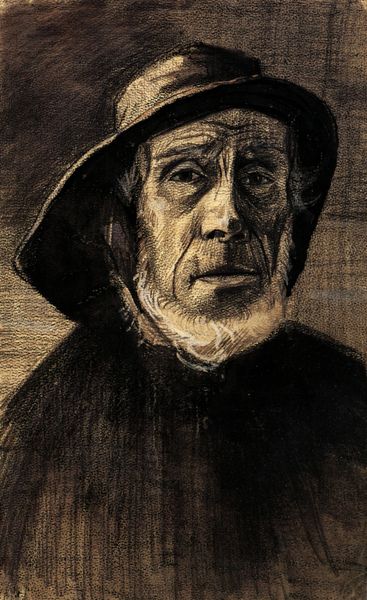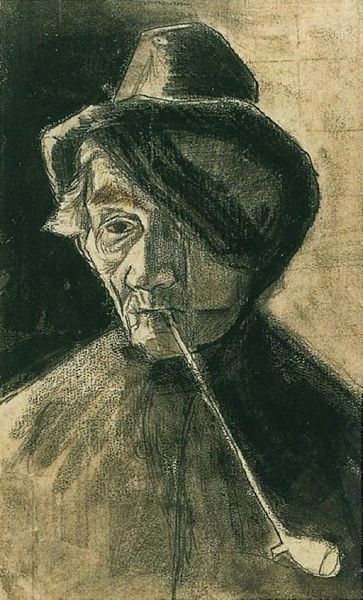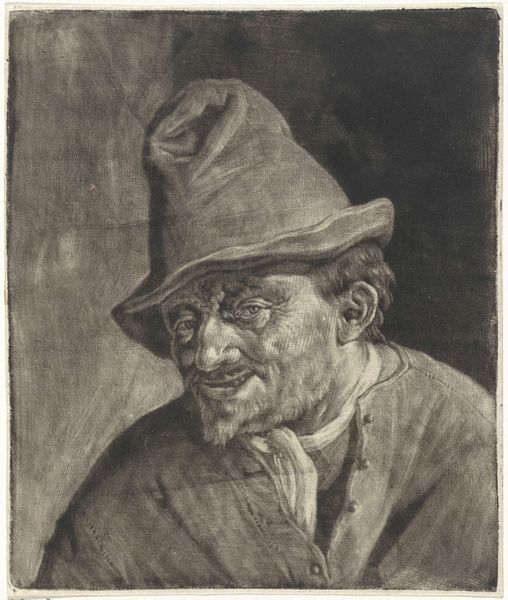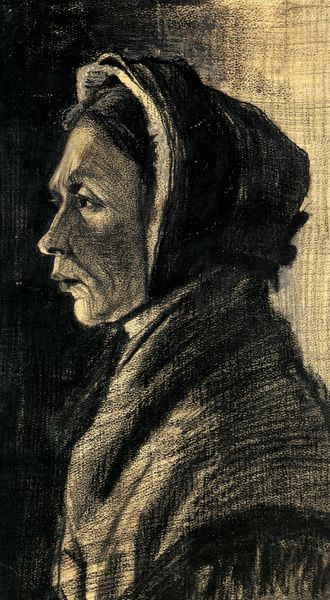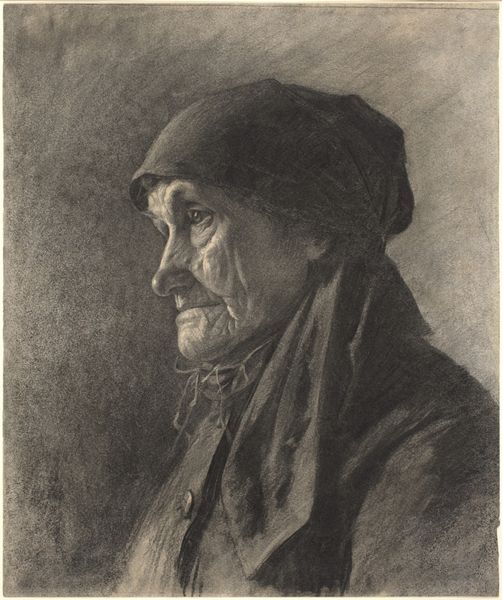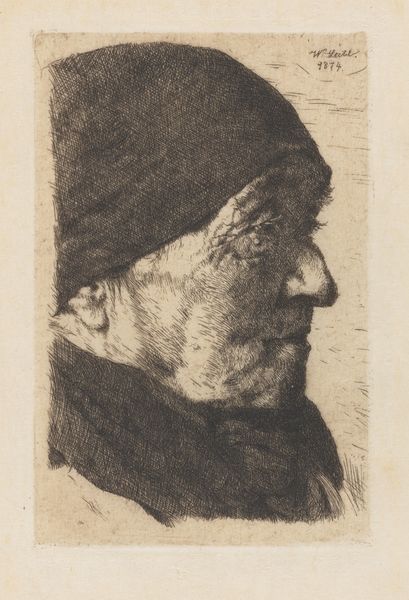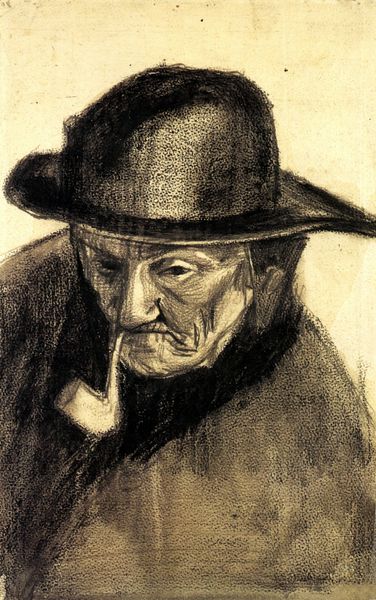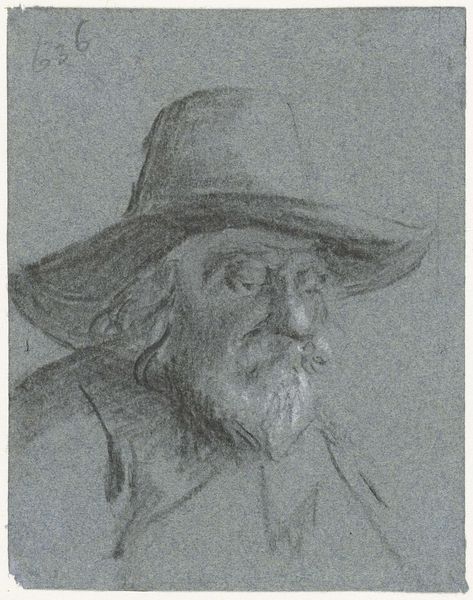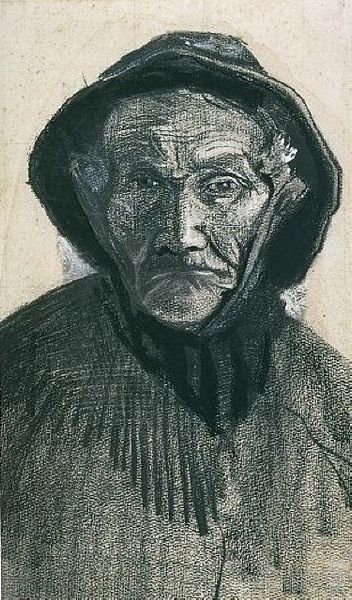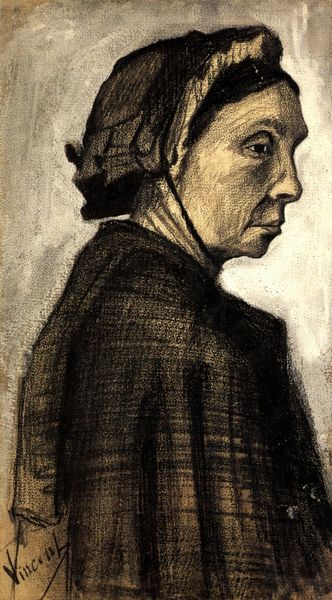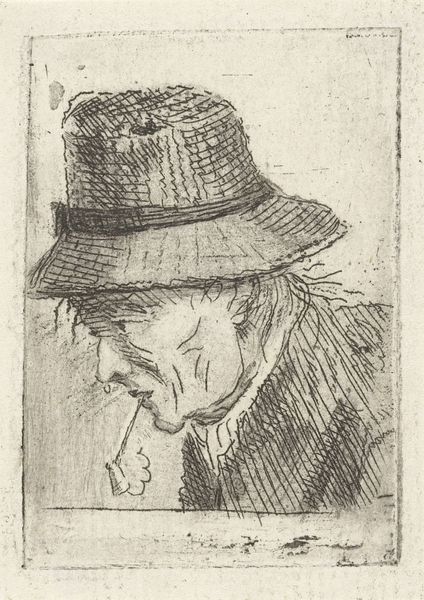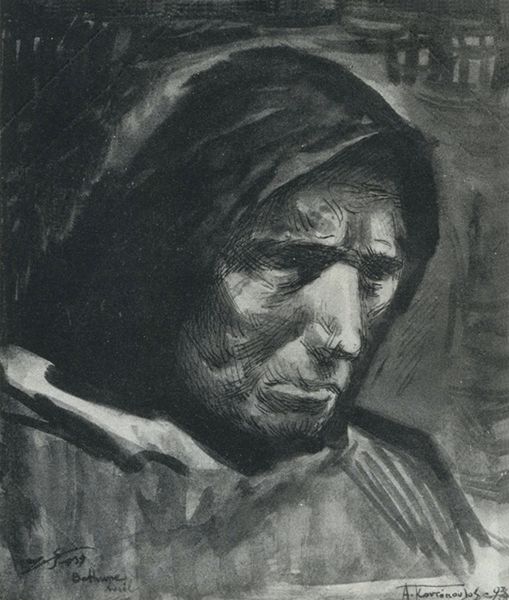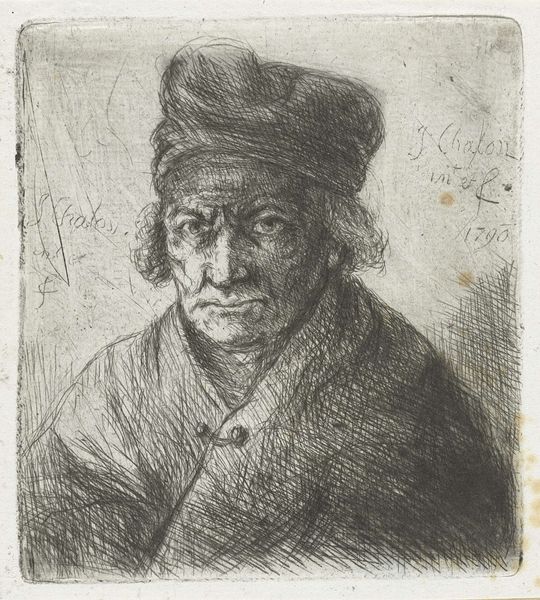
drawing, charcoal
#
portrait
#
drawing
#
charcoal drawing
#
charcoal
#
post-impressionism
#
realism
Copyright: Public domain
Curator: Right, let’s turn our attention to this charcoal drawing by Vincent van Gogh, created in 1883. It’s called “Head of a Fisherman with a Sou'wester.” You can find it in the collection of the Van Gogh Museum in Amsterdam. Editor: My first impression is... worn. Weather-beaten. It's the sort of face that holds untold stories etched into every line and shadow. You can almost smell the sea air coming off of it. Curator: Precisely! The sou'wester hat, a traditional rain hat worn by sailors and fishermen, tells us much about his life. This isn’t just a portrait; it’s a study in resilience. The deeply shadowed areas surrounding the man's face make his prominent features seem to surface from some unknown deep. He is part man, part force of nature. Editor: The man's gaze holds such an intensity. It's interesting, don't you think, how Van Gogh uses the charcoal almost sculpturally? Layering and smudging create this amazing depth, the furrows of his brow... Curator: Absolutely. Charcoal, as a medium, carries with it an immediacy, almost a raw energy. And here, that aligns so perfectly with Van Gogh’s broader themes: the dignity of labor, the connection to the earth… Even the material serves as a potent symbol for the trials etched in the fishermen’s life. He sought, perhaps, to elevate an everyday figure to an archetypal one. Editor: It makes you think about the countless storms this man weathered, both literal and metaphorical, perhaps even what those things do to the landscape of a person’s face and soul. Curator: Indeed. Look closely, and the fisherman's face reflects a history – a cultural memory that Van Gogh captured with surprising nuance. This isn’t just an individual; it embodies an entire way of life that’s closely interwoven with its environment. It transcends pure portraiture to become an iconic image. Editor: I wonder what Van Gogh saw in him, what depths in that soul resonated with him. I see loneliness too, but not of the pitiful kind; it's more like a solitary strength forged by a life lived close to the elements. I'll not soon forget him. Curator: Nor I. Thank you for your perspectives, they're helpful for contemplating the weight this drawing continues to hold. Let's move on.
Comments
No comments
Be the first to comment and join the conversation on the ultimate creative platform.
